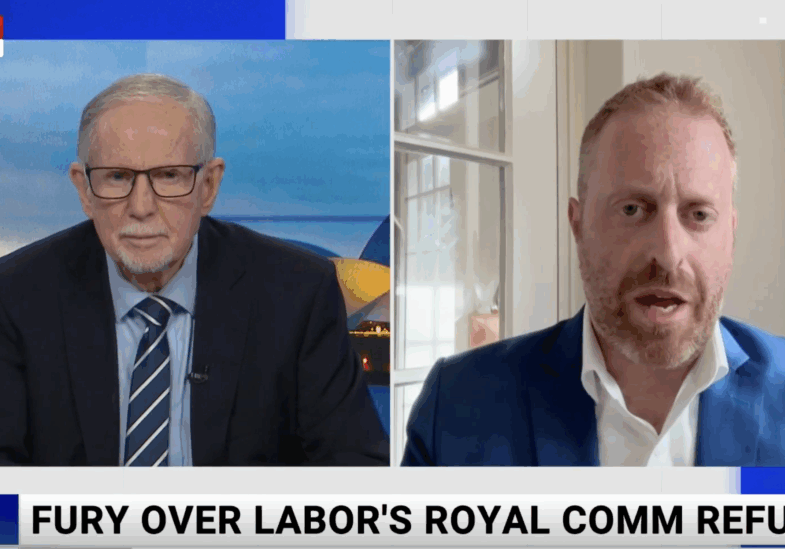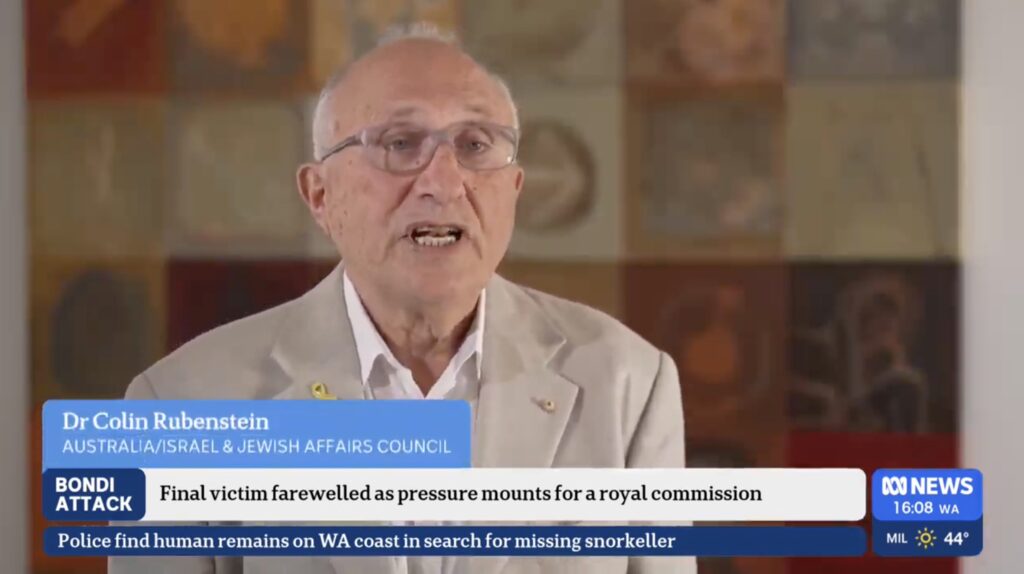FRESH AIR
Ten years of Hamas rule in Gaza: Some facts everyone should know
July 4, 2017 | Ross Beroff

This month marks the 10-year anniversary of the terrorist organisation, Hamas wresting control of Gaza from the Palestinian Authority. Since then the small strip has been disproportionately in the news, not least for the three wars with Israel that Hamas has provoked.
Most recently, it has been in the news because:
- On June 9, the United Nations Relief and Works Agency for Palestine Refugees (UNRWA) announced that it had found terror tunnels under a school that it runs. These tunnels, built by Hamas, are just some of many that Hamas has reportedly spent over US$200 million to build over the past few years.
- Gaza is experiencing a crisis over electric power for the strip’s residents, with many reduced to as little as three hours a day of power over recent weeks. Disputes between Hamas and the Palestinian Authority over paying for fuel led to the strip’s sole power station closing in April.
- The Palestinian Authority chose to reduce payments and request that Israel reduce the amount of power it was delivering Gaza, which previously had provided about 35% of Gaza’s power needs.
- This week, however, Egypt began sending 1 million litres of fuel to help alleviate the electricity crisis and the Gaza power plant was able to be restarted. Gazans are now expected to get six hours of power, followed by twelve hours without.
In the international media there exists an easily recognisable trend of over focusing on Israel, at the expense of other factors influencing events. This is certainly with respect to Gaza, where the actions of the Palestinian Authority, Egypt and especially Hamas, Gaza’s actual rulers, are often downplayed or even ignored.. In the age of “post-truth,” “alternative facts,” and “fake news,” it is important to know what the actual facts on the ground are and what the actual data is.
Basic Facts about Gaza
- Gaza is a 360 square kilometre strip of land located between Israel and Egypt.
- The population is 1.7 million people.
- Israel completely evacuated and disengaged from the strip in 2005. Two years later Hamas took over.
- In 2014 a unity agreement was signed between Hamas and the PA, but Hamas has retained de facto control on the ground. The two are now locked in a bitter dispute.
No one would argue that life is easy living under Hamas, or that there are not genuine and serious humanitarian issues in Gaza that people should be concerned with. Nonetheless, the reporting on Gaza often does not put these issues into perspective, such as an often-cited UN report that Gaza could become uninhabitable by 2020, a debatable proposition at best.
Since the 2007 Hamas coup, crossing the border between Gaza and Israel has become a lot more complex – though a large security fence surrounded Gaza even before then. With Hamas exponentially increasing rocket attacks into Israel from Gaza after 2007, Israel instituted a blockade designed to regulate the import of military and dual-use material into Gaza. This also limited the entry of Gazans into Israel – given the hostility of the government and the repeated efforts to send terrorists from Gaza into Israel.
The truth about the blockade
The Israeli blockade – often described falsely as a “siege” – is often presented as if it completely blocks the entry of goods into Gaza and thus is creating a humanitarian crisis there. A before and after look at the situation easily disprove such claims.
- Before 2007, around 10,400 trucks worth of goods would cross into Gaza on a monthly basis from Israel.
- By, 2016 that monthly number was up over 30%, to about 14,460 trucks a month. In other words, more goods are going into Gaza today than were getting into Gaza before the blockade was declared.
- It should not be forgotten that Egypt controls another border with Gaza and kept it closed for 322 days last year.
- Reports from Gaza make it very clear that there are no shortages of consumer goods or food there. For instance, Prof. Mkhaimar Abusada, head of the Department of Political Sciences at the Gaza branch of Al-Azhar University, recently agreed that “You can get anything you’re looking for at the supermarkets. Fresh fruit and vegetables, meat and dairy products” – while going on to complain that many Gazans cannot afford to buy them.
Density and Poverty
- Exports from Gaza have increased about 200% since last year with goods going around the world, including into the Israeli economy.
- One of the largest and most misleading rumors swirling around is how bleak the situation is for Gazans. There are accusations of genocide and Gaza is often misleadingly called the most densely populated place on earth.
- Gaza City has about 42,600 people per square mile putting it close to the 40th most densely populated metropolises. Mumbai has 83,800 people per square mile and Karachi has 59,100.
- 75% of the population lives in urban locations
- On the whole, the population density of Gaza is 13,064 people square mile, this is half as dense as New York City, and also less than other small and wealthy enclaves such as Macau or Monaco
- Contrary to claims of a humanitarian crisis there, Gazans on average live longer than the average person.
- The average life expectancy is 73 years old, while some sources push that closer to 74. The United Nations puts the average life expectancy of the global population at 69 years.
- Many neighbouring Arab countries have lower life expectancy than Gaza. In Egypt it is 71 years, while in Syria and Iraq it is lower still. Gaza has almost the same life expectancy as many stable Arab countries with no humanitarian crisis, such as Jordan, Saudi Arabia, Morocco, and Kuwait. (All figures from World Health Organization 2015 data.)
- On a yearly basis the life expectancy in Gaza has been increasing since at least 1990, according to the World Bank’s earliest available data.
Gaza’s Worst problems are inflicted by its own leadership
- If there is a single biggest problem that faces Gaza, it is access to potable water. Under PA/Hamas rule since 1994, the Gazan Aquifer has been severely depleted by over-use. There have been efforts to address this and the overall issue of water, including even plans to build more desalination plants. This issue is complex and deserves a full-length analysis of its own. More can be read about it here.
- The UN and the EU have completed construction of two desalination plants, but these do not provide nearly enough water and are also impacted by cuts in electricity. Both have received little or no cooperation from Hamas.
- It is estimated by Coordinator of Government Activities in the Territories (COGAT) that 96% of the water in Gaza is undrinkable without further treatment
- Israel surpasses obligations by double the amount required by the Oslo Accords and supplies a yearly amount of 10 million cubic metres of water to Gaza
- Healthcare is another incredibly complex issue facing Gaza. However, Gaza has had what should be adequate health care facilities and other arrangements for providing for the health care needs of residents – including arrangements which typically see between 1500 and 3000 residents and companions leave Gaza for treatment either in Israel or in the West Bank each month when they cannot be treated within Gaza. There are 1.4 hospital beds per 1,000 people, compared to 0.5 beds per 1,000 people in Egypt. However, recent PA-Hamas conflict has seen a deterioration in this situation as a result of the PA allegedly withholding medicine from Gaza hospitals and even limiting patients leaving Gaza to get necessary treatment, which has allegedly resulted in the deaths of children.
Economics of Gaza: Where the money is from and how it’s spent
- 2.7 billion British pounds were pledged to Gaza at the 2014 Cairo donor conference.
- Only 40% of that pledge has actually been followed through with.
These numbers do not include the millions of dollars provided by Iran so far, which will likely be increased due to Hamas’ warming up to the Iranian regime.
Even when Hamas does receive all the money it is promised, it does not act as a responsible global citizen or governing body with the funds.
- On a monthly basis, Hamas collects NIS 100 million (A$37 million) in taxes from resident Gazans
- Of the 2013 official Hamas budget, a measly 2% was for development and around 11% of expenditures went towards social welfare.
- According to the Palestinian Authority, Hamas uses up whopping 2/3 of its budgeted expenditures on terrorist related activities.
- It is estimated that $130 million USD is spent on the Hamas military wing.
- Budgeted terror activities can range from the acquisition of weapons to the construction of terror tunnels.
Money that is being spent on terror has the potential to be helping Gazan families in need. However, there is plenty of money that goes to neither terror nor welfare as it is embezzled by Hamas leadership.
- The former head of the political wing of Hamas, Khaled Mashal has a net worth between US$2 to 5 billion.
- Gazans under Hamas suffer from abject poverty with 2/3 of families having a monthly income of around or under AU$430.
- As of the end of 2016, the unemployment rate for 20-24 year olds was 60.3%.
- The numbers were not much better for 25-29 year olds at 52.1%.
- There are an estimated 600 millionaires in Gaza – their riches are not due to them being start-up tech geniuses or financial wizards, but corruption or smuggling.
- Interestingly there has been a small trend of Egyptians finding ways to get into Gaza in order to find work, as the pay is still better than what they can get back home.
The feelings of the people vs. their ability to express it
- Only 14% of Gazans identify as Hamas supporters.
- Surprisingly less than half of Gazans blame their economic situation on Israel, despite Hamas propaganda.
- Only 26% can find it in themselves to place the blame on Hamas, the actual culprit.
- An equal amount of blame is placed on the Palestinian Authority and the United Nations, each coming in at 11%.
- Egypt, which I had noted kept the border closed for the vast majority of last year, is only blamed by 4% of Gazans for their economic situation.
Even with the low amount of support and significant amount of distaste for Hamas, there is very little that the locals can actually do to express themselves.
- Freedom House ranks the Gaza Strip as “Not Free,” giving it an aggregate score of 12/100, with zero being least free.
- Additional political rights were rated at 5/7 and Civil liberties were given 6/7, with both the political rights and civil liberties rating systems having 7 as the least free.
The situation in Gaza is definitely bleak and without a change in the Palestinian leadership and a genuine desire to improve the situation, it is unlikely to get better.
In order for Gazans to be helped, their leadership must first choose to really want to make the welfare of Gazans a priority – which neither Hamas not the PA has so far been willing to do. Propping up this leadership without demands that they also stop focusing on fighting each other while preparing more violence against Israel, by NGOs, foreign countries or international institutions, will likely cause more harm than good. To begin to help Gazans, the real situation of Gaza and how it got where it is today needs to be fully understood.























